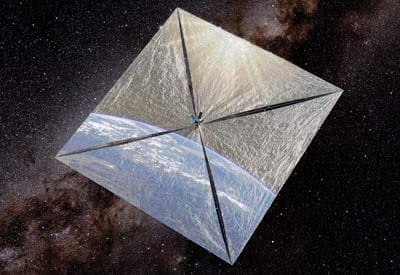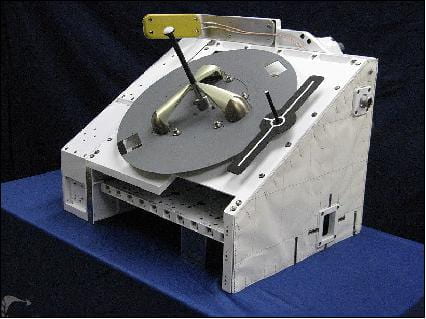The LightSail missions, both LightSail 1 and LightSail 2, were developed by The Planetary Society to provide a functional demonstration of light propulsion for spacecraft. LightSail 1 demonstrated that the sail itself could be safely launched and deployed upon atmospheric insertion. Building on this success, LightSail 2 demonstrated the ability to raise the apogee of its own orbit through the sole use of sail deployment and solar sailing.
Each CubeSat was built on a 3U standard bus and weighed approximately 5kg at launch. The craft were powered by 4 solar arrays which ran the length of the 3U bus and could be deployed to ensure that they did not interfere with the boom release or the sail deployment.
Launch and Deployment:
LightSail 1 was launched on an Atlas V vehicle on May 20th, 2015. It was placed in Low Earth Orbit (LEO) as planned; however, a software problem caused initial sail deployment to fail. A well timed radiation induced system reboot allowed ground control to reestablish contact with LightSail 1 and the sail was properly deployed on June 7th, 2015. Due to the atmospheric drag in LEO LightSail 1 was not actually able to perform any solar sailing and it decayed on June 15th, 2015. Despite this, the demonstration of sail deployment following launch allowed researchers to quickly apply their progress to LightSail 2.
LightSail 2 was launched June 25th, 2019, just over 4 years later, onboard a Falcon Heavy launch vehicle as part of Prox-1. The satellite deployed from Prox-1 and flawlessly deployed its sail on July 23rd, 2019 and over the course of 1 month demonstrated successful solar sailing by raising its orbit by nearly 2 kilometers
Sources and Additional Information:
- https://www.space.com/light-sail-first-photo-satellite-tracking.html
- https://space.skyrocket.de/doc_sdat/lightsail-1.htm
- https://directory.eoportal.org/web/eoportal/satellite-missions/content/-/article/lightsail1
- https://www.planetary.org/sci-tech/lightsail
- https://en.wikipedia.org/wiki/LightSail
- https://www.n2yo.com/satellite/?s=44420
| Acronym | n/a |
| Full Name | LightSail 1,2 |
| Size | 3U |
| Status | LightSail 1: Decayed LightSail 2: Active |
| Launch Date | LightSail 1: May 20th, 2015 LightSail 2: June 25th, 2019 |
| NORAD ID | LightSail 2: 44420 |
| Downlink Frequency | LightSail 2: 437.025 MHz |


